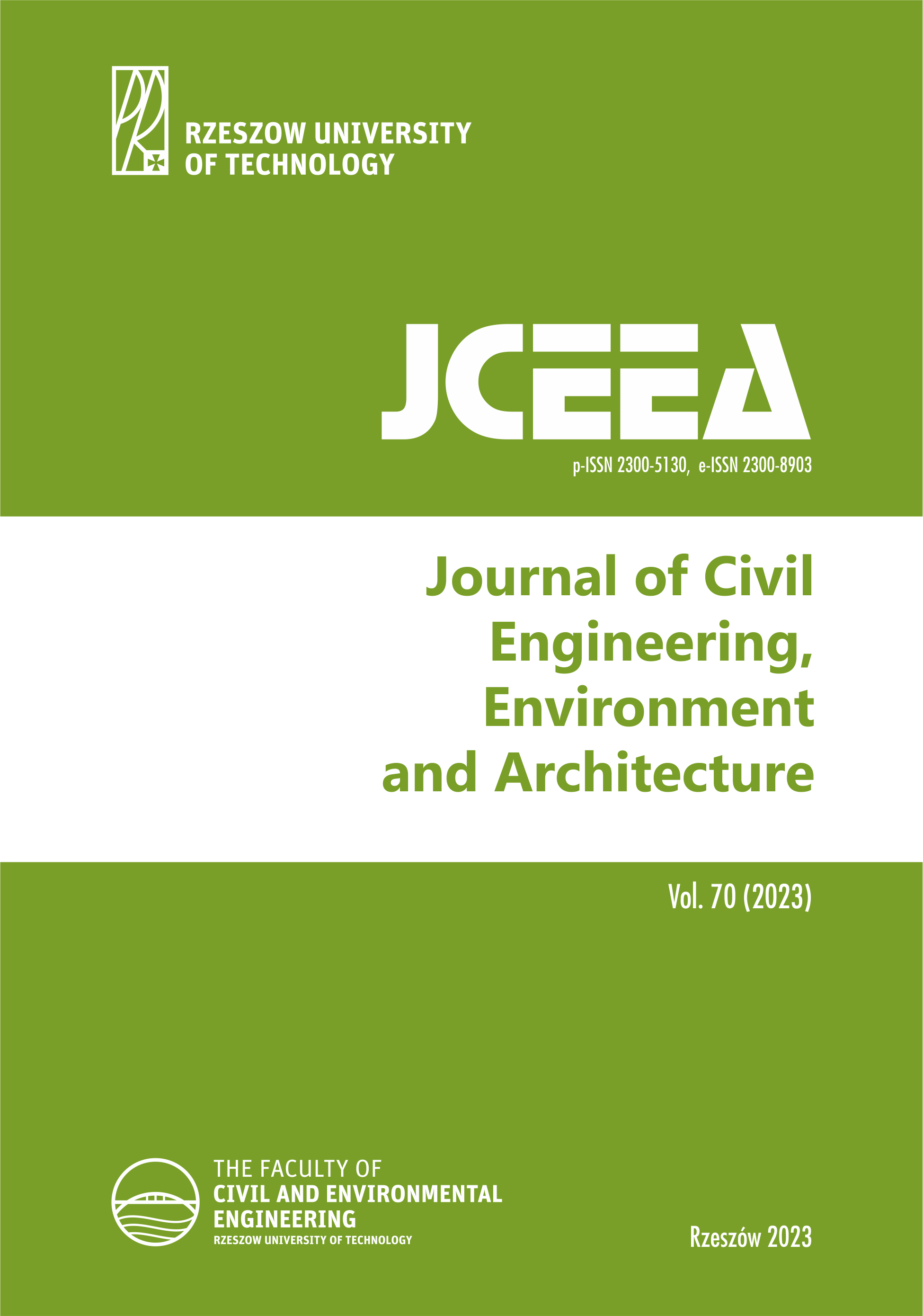Abstract
This research article presents a~comparative analysis of vibration assessments in lecture halls to investigate their influence on people using contact (accelerometers) and non-contact (laser vibrometers) measurement techniques. The study aims to verify the accuracy and reliability of vibration analysis in relation to two approaches and determined physical parameters, i.e. acceleration amplitudes and vibration velocities. The intriguing fact was that none of the building users reported any perceived discomfort from vibrations, despite the determined parameters of the signal measured using a~laser vibrometer indicating exceedance of permissible vibration amplitudes in several frequency bands. The conducted comparative analysis leads to the conclusion that the location of the laser head tripod on the vibrating floor introduces significant vibration amplification, which in turn may lead to an incorrect assessment of the impact of vibrations on people in buildings. The studies described in the article were carried out in accordance with the procedure contained in the Polish national standard PN-B-02171. The obtained results and the resulting conclusions are an important contribution to a~better understanding of the advantages and limitations resulting from the use of non-contact measurements.
References
PN-B-02171:2017: Evaluation of the vibrations impact on people in buildings (in Polish)
J. Kawecki, A. Kowalska, Analysis of Influence of Vibrations on Humans in Buildings in Standards Approach. Archives of Civil Engineering, 58 (2), 223-239, 2012.
J. Kawecki, K. Stypula, Methods of Assessment for Vibration Impact on People in Buildings. Proceedings of the Eleventh International Conference on Computational Structures Technology, Civil-Comp Press, Stirlingshire, Scotland, 177, 1–9, 2012.
A. Kowalska–Koczwara, K. Stypula, Assessment of the Vibration Influence on Humans in Buildings in the Standards of Different Countries. Procedia Engineering, 161, 970–974, 2016.
A. Ebrahimpour, R.L. Sack, A rewiew of vibration serviceability criteria for floor structures. Computers and Structures, 83, 2488–2494, 2005.
BS 6472-1:2008: Guide to evaluation of human exposure to vibration in buildings. Part 1: Vibration sources other than blasting.
MathWorks®, Audio Toolbox™ Documentation. https://www.mathworks.com/help/audio/, (Access: 19.05.2023).
J. Kawecki, K. Stypula, Providing vibration comfort to people in buildings exposed to traffic impacts. (in Polish) Publishing house of the Krakow University of Technology, Krakow 2013.
Matlab® DSP System Toolbox, https://www.mathworks.com/products/dspsystem.html, (Access: 19.05.2023).
P. Nazarko, R. Wdowik, J. Porzycki, Methodology of measuring ultrasonic oscillations of tools using LDV (in Polish), Pomiary Automatyka Robotyka, 7 (10), 160–165, 2013.
K. Nering, A. Kowalska–Koczwara and K. Stypula, Annoyance Based Vibro–Acoustic Comfort Evaluation of as Summation of Stimuli Annoyance in the Context of Human Exposure to Noise and Vibration in Buildings. Sustainability, 12, 9876, 2020.
MathWorks®, Matlab Help Center. https://www.mathworks.com/help/matlab/ref/cumtrapz.html, (Access: 4.09.2023).

